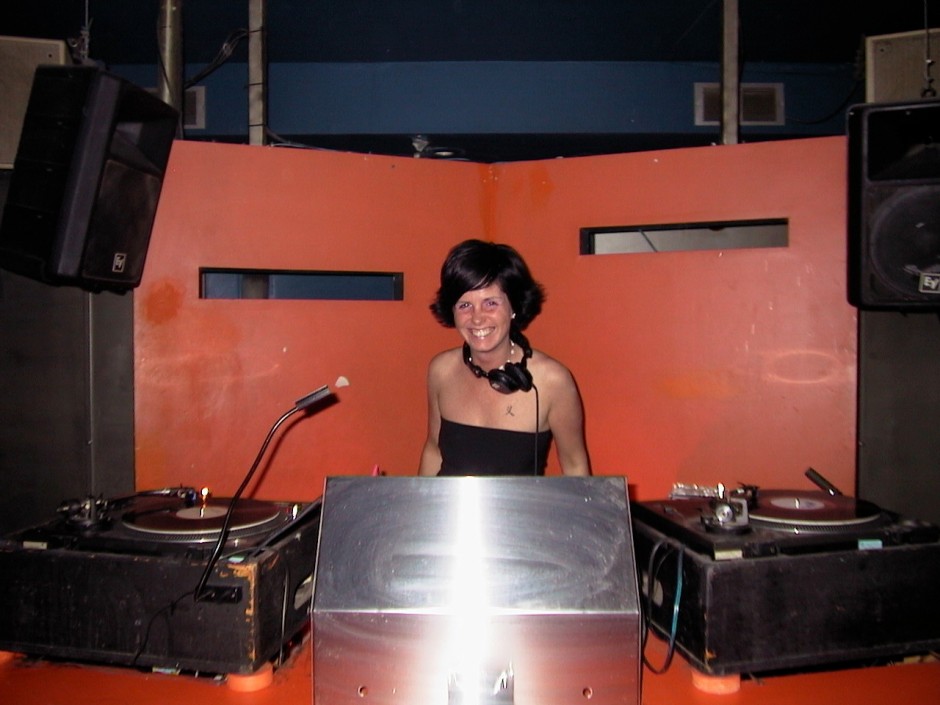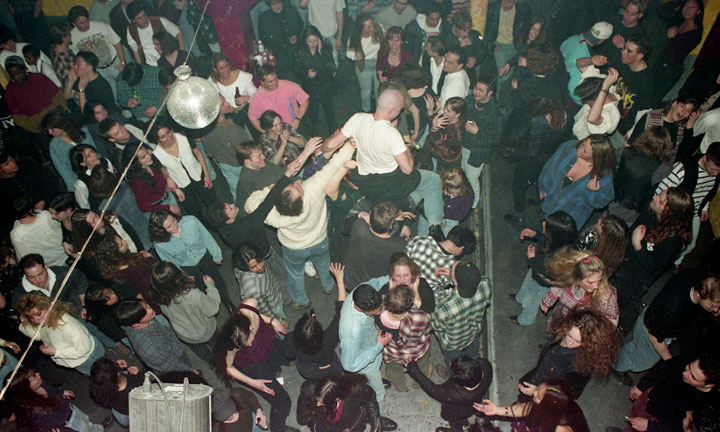AnnMarie McCullough a.k.a. DJ Amtrak at Element. Photo courtesy of her.
Article originally published April 26, 2012 by The Grid online (TheGridTO.com).
As Clubland boomed at the turn of the millennium, this beloved Queen West space provided a big-room experience in an intimate, underground atmosphere—but it ultimately became a victim of its own success.
BY: DENISE BENSON
Club: Element Bar, 553 Queen W.
Years in operation: 1999-2004
History: In the late 1990s, Toronto’s rave and house music scenes were booming. Raves attracted audiences of multiple thousands while even licensed clubs catering to underground tastes tended to hold at least 800. The Entertainment District was littered with venues—most of them commercial and unadventurous—while the College and Ossington strips had not yet developed into hotspots for small to mid-sized venues.
In this environment, a group of friends rented a decidedly intimate space on Queen, between Spadina and Bathurst, that had been home to popular pool hall Behind the Eight Ball and, briefly, 24/7 Billiards. The address was also known for after-hours parties on its top floor, dubbed Zodiac.
Tony Mutch, Marcus Boekelman, and their silent partner Patrik Xuereb all met in high school. By their late 20s, Boekelman and Mutch had both produced parties, with Boekelman having experienced Ibiza and London and promoted events in Toronto featuring electronic dance-music stars like Paul Oakenfold.










